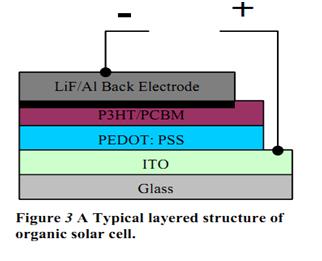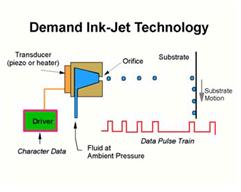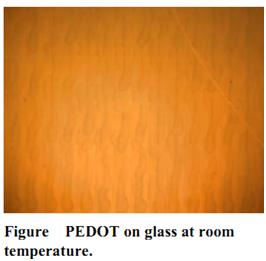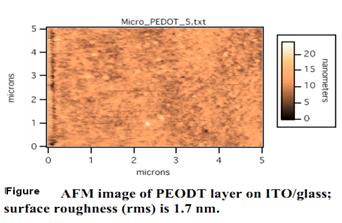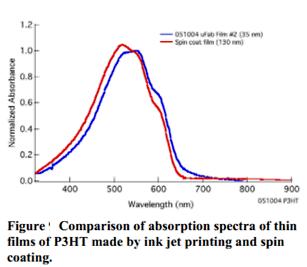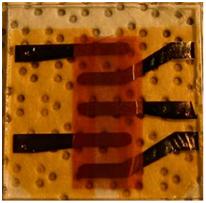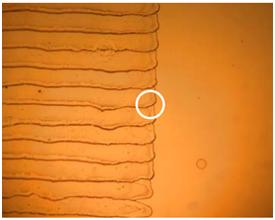Here in this review, we have covered a complete research about production of polymer solar cells as a best cheap alternative to expensive silicon based solar cells. Process involves printing conductive polymer thin films and organic BHJ, mixing two polymer layers between electrodes to generate energy when it’s exposed to sunlight. Ink Jet printing will use small amount of BHJ material, proving it a low cost method to be used for printing on plastic and rigid substances.
Solar cells are the long lasting sources of energy and can be used anywhere. Solar Cells energy is advantageous where there is no other source of electricity because solar cell is a solid state electrical device which will directly convert light energy into electricity.
Introduction
Solar cell or Photovoltaic cell is basically a solid state electrical device which function converting light energy into electricity using photovoltaic conversion process. Solar cells are combined to make solar modules. Energy generated through these solar modules is called solar energy or solar power. However production of solar cells needs an expensive process and selection of best material for solar cells is the great decision fort this source to cheap source of energy production. Photovoltaic is the latest research field which is currently getting more attention due to electricity production through this resource from sun light. In our research study, we will prove the manufacturing of polymer solar cells as much cheap then using the silicon solar cells.
Previous Researches
In 1950s, Hansel observed the production of drops using electromechanically induced pressure waves. In this process, voltage pulse applied to piezoelectric material, coupled with fluid and making volumetric change in fluid. Volumetric Changes created velocity transients in fluid to produce drop from orifice. Two broad approaches used are Continuous Ink-jet technology and Demand Ink jet technology. In continuous Deflect and Charge ink jet technology orifice issues a pressure fluid typically in a diameter of 60 µm. While Demand ink jet technology is simpler and widely used for smaller drops of 20- 100 µm.
In Drop on Demand (DOD) technology, a drop is ejected from orifice device when voltage is applied to a transducer. DOD technology produces drops that are almost equal to orifice diameter of Droplet Generator.
Model for Solar cells functioning
A typically solar cell which consumes heterojunction components is same like the structure here provided.
ITO is coated glass is ink jet printed with 3, 4 ethylene dioxythiophene to a thickness of about 100 nm, which will provide the facility for hole conduction. It will also smooth the rough ITO layer. In Next phase using a heterojunction polymer blend containing 3-hexylothephane in its common form an electron donor and a fullerene derivate is used as electron acceptor. The ink will be deposited to a surface thickness of about 100 nanometers. Now a 10A0Layer of LiF will be evaporated to photoactive polymer layer to fullerene layer to decrease the barrier for electron injection.
Experimental Results
In this process here discussed a bit in model and functioning of photocell, 100 nm Aluminum is evaporated onto LiF to develop the back electrode for completion of solar cell electric device Fabrication. Creation of work field functions between electrodes and an internal electric field is initiated. During this Electron will move towards aluminum cathode and holes will move toward ITO Layer.
There are number of solar cell BHJ materials which researchers have tried for printing the organic solar cells. A number of patterns in this way we can print using Drop-on-Demand (DOD) Ink jet technology. We experienced the commonly used patterns like arrays, lines and arrays of arrays. Here two modes can be used in DOD jet printing. In POP approach, material drops are dispensed before stage can move to next target or location. While in POF approach materials’ drops will be dispensed when stages underneath move. Rate of dispensing will be determined using stage speed and spacing between drop locations.
During this research study, all the glass substrates were cleaned properly before the experiment. Each substrate was also cleaned with oxygen dioxide plasma before printing. The main goal was to get the uniform thin films. PEDOT (1.3%) was mixed in dilutions ranging 1:0.5 to 1:1.33 of PEDOT to DI water and target velocity of 2 m/s was sought for a given PEDOT Solution.
On 500 temperatures, pattern offered the most uniform PEDOT coating being analyzed by AFM and shown below in a figure.
Below in the figure it’s showing the quality of a PEDOT film right after printing and heating at 200 degrees for 5 minutes.
After successful printing of PEDOT layer,photoactive polymer-fullerene layer was followed.In BHT system,the electron donating component is P3HT.When electronic acceptor like PCBM is combined with P3HT,a photovoltaic layer was produced.
Figure: Printed DEPOT at 500, in above picture absorb excellent edge alignment and in below box check line to line coverage.
Below in figure, its showing the a portion of printed P3HT layer on glass at 25 C0.P3HT was prepared on PEDOT after finding optimum wavelength.
Solar Cell Device Printing
After testing different temperature ranges and printing patterns, 600 C was selected an alternating dispensing pattern. Complete organic photovoltaic devices were fabricated 25 mm square glass substrates. Device area was patterned by depositing Silicon Oxide layers onto OTO to define a 3 mm wide center strip. Below in figure showing the cross-sectional drawing of patterned device. PEDOT’s 5* 20mm patch was printed over to the exposed 3mm wide strip of ITO and polymer fullerene blend was on the PEDOT. Below in figure its showing a complete solar cell device with black electrode as cathode.
An ink jet printer solar cell is the effective and much feasible, although C60is fullerene is not the preferred item of BHJ system materials for production of the organic solar cells. PCBM, the derivate of fullerene was not available at final print experiment. C60keepdispersed during printing, it was difficult to initially disperse it in P3HT solution. Using the C60caused some undesirable aggregation print row edges, as shown in figure results below.
It was remedied by overprinting of material to fill the holes appeared due to edge aggregation. The final step of evaporating electrode on polymer fullerene didn’t take place after its printing. So we can strongly believe that further research using PCBM will yield more effective results. Use of PCBM as electron acceptor can improve the efficiency. Quality of printed film printed would be improved by printing polymer; keeping Electron acceptor in a globe box where water and oxygen levels would be controlled 5 ppm or less than that and evaporating the cathode after printing polymer. Future Efforts to improve solar cells efficiency would be thus,
I. Using fullerene derivates (6, 6 Phenyl C61 butyric acid methyl ester) as electron acceptor and PCBM optimization.
II. O2 and H2O protected environment to prevent degradation of polymer.
III. Evaporation of cathode right after printing of polymer.
All these measures should result in increased charge mobility carrier and increased morphology of polymer and thus increased efficiency of Solar Cells. Solar cells fabrication will be helpful to enhance our solar energy production with


